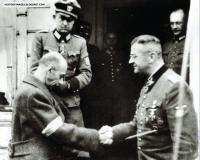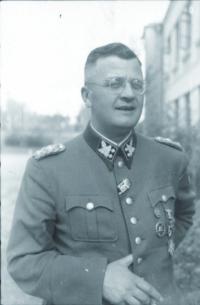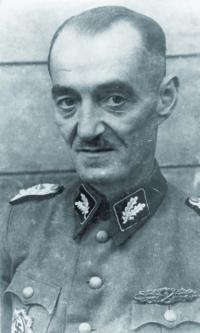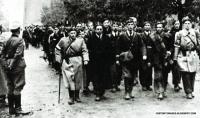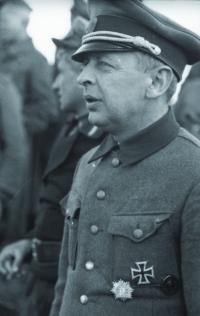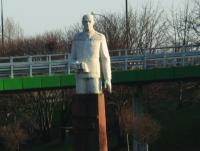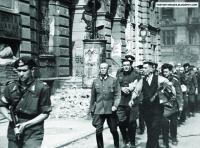THIS WEEK, 70 years ago, Polish resistance forces - the Armia Krajowa - under the command of General Count Tadeusz Bòr-Komorowski, seized control of most of central Warsaw from the German occupiers. The action was ordered by the Government of the Republic of Poland in Exile, in London, headed by Stanisław Mikołajczyk, and was called Operation Tempest. The action had the following aims: (1) to show the world that the Poles were masters of their own fate; (2) to strike a blow against the hated German occupiers; (3) to ward off the threat of a German roundup of able-bodied Poles; (4) a response to the call from Radio Moscow to rise; (5) to establish control, and a government, before the Soviet-backed Committee of National Liberation, chaired by Edward Osóbka-Morawski, assumed control.
The Red Army, which had been moving west at a fairly rapid pace since the launch of Operation Bagration, on June 22, 1944, suddenly stopped on the outskirts of the Polish capital. There were several reasons for this halt: (1) Most of the troops involved, from the First Belorussian Front, commanded by Marshal Konstantin Rokossovsky, had been fighting and marching across Belarus since June 22, 1944 and needed rest and supplies; (2) Marshal Rokossovsky’s First Belorussian Front was concentrating on establishing, and holding, bridgeheads across the Vistula, and other rivers, in order to continue its advance; (3) counterattacks by the hard hitting and powerful SS Viking Panzergrenadier, Hermann Göring Panzer and 4th & 19th Panzer Divisions, commanded by Johannes-Rudolf Mühlenkamp, Wilhelm Schmalz, Clemens Betzel and Hans Källner; (4) Stalin’s desire not to have to deal with those “troublemakers” (the Armia Krajowa); (5) most importantly, the fact that Warsaw, like Paris on the Western Front, was not on the Red Army’s agenda, because becoming embroiled in an urban warfare setting would merely slow the army, raise the casualty lists and delay final victory.
At first, the Germans were surprised, and outnumbered, and the Armia Krajowa achieved some local successes. However, they were too lightly armed to stand against the more heavily armed Germans. Even then, they only had ammunition for seven days. They hoped that by then, they would have joined forces with the Red Army.
By the end of the first day, 2000 Poles and 500 Germans were dead, and the Armia Krajowa had captured the main post office, the mint, an SS food and uniforms warehouse, gas, electric and waterworks. By August 3, 1944, the Warsaw garrison commander, Lt. Gen. Rainer Stahel, was replaced by SS-Obergruppenführer Erich von dem Bach-Zelewski. SS-Obergruppenführer von dem Bach-Zelewski was the perfect man for the task to which he had been assigned - which was nothing less than the destruction of the ancient Polish capital. Earlier, he had served in the Einsatzgruppe B, charged with killing Jews in Belarus. In 1943, he was placed in charge of anti-partisan activity in Belarus.
Along with SS-Obergruppenführer von dem Bach-Zelewski, reinforcements for the 11,000 man garrison also began arriving, under the command of SS-Gruppenführer Heinrich Reinefarth. These included the “Dirlewanger Brigade,” commanded by SS-Standartenführer Dr. Oskar P. Dirlewanger, an alcoholic, convicted, child-molester, and the “Kaminski Brigade,” commanded by SS-Brigadeführer Bronislav Vladislavovich Kaminski The SS forces were ordered by SS-Reichsführer Heinrich Himmler to take no prisoners and to destroy the city in subduing the insurrection. Once again, the SS-Reichsführer had selected the perfect units for the task at hand. The “Dirlewanger Brigade” consisted of criminals - thieves, rapists, murderers, arsonists. The “Kaminski Brigade” was composed of Russians, of whom SS-Obergruppenführer von dem Bach-Zelewski later said, "... he had seen Kaminski's men cart off entire carloads of 'stolen jewelry, gold watches, and precious stones'. As he recalled it, 'The capture of a liquor supply was more important for the brigade than the seizure of a position commanding the same street.'”
With the Voyenno-Vosdushnye Sily (VVS) having ceded the sky to the Luftwaffe, the Germans enjoyed absolute air superiority, and pounded the Poles with Stukas. The Poles desperately beseeched their American and British Allies for support. On the night of August 4, the RAF responded by sending 13 Liberators and Halifaxes on the 1700 mile round trip from their base in Brindisi, Italy. These flights continued, without fighter escort, until September 22, 1944, at a cost of 39 planes. One pilot said that, “There was no difficulty in finding Warsaw. It was visible from 100 km away. The city was in flames but with so many huge fires burning, it was almost impossible to pick up the target marker flares.” The Allies requested that they be allowed to land in the Soviet Union on August 20. Two days later, Stalin, in denying the Allies’ request, replied that the uprising was inspired by, “ . . . enemies of the Soviet Union,” and referred to them as, “ . . . a handful of criminals.”
The Red Army renewed its offensive on September 11, and once again the VVS took to the sky. The Soviets began bombing and shelling German positions in the city, The suburb of Praga, on the eastern side of the Vistula River was captured. The Soviet First Polish Army, commanded by Zygmunt Henryk Berling arrived on the eastern side of the Vistula River on September 16. The following day, soldiers of the First Polish Army attempted to cross the river, but were repulsed with the loss of more than 1000. That ended any attempts by the Red Army to cross the river.
Negotiations between the Armia Krajowa and the Germans began on September 28. When the Germans agreed to treat the soldiers of the Armia Krajowa as POW’s, the Poles agreed to surrender. On October 2, 1944, 15,000 marched into POW camps, while 55,000 civilians were transported to concentration camps because they were “dangerous elements,” and 150,000 were transported to labor camps in Germany. More than 200,000 civilians were killed, along with 15,200 insurgents. General Berling’s First Polish Army suffered 5,660 casualties.
During the Uprising, 25 percent of the city’s buildings were destroyed. The Germans destroyed another 35 percent after the uprising. All told, 85 percent of the ancient city was destroyed during the war.
The Germans lost 16,000 killed and missing and had 9000 wounded. They lost 310 tanks, armored cars and self-propelled guns, 22 artillery pieces and 340 cars and trucks.
On January 17, 1945, the Red Army quietly entered the Polish capital.
August 1 is now celebrated as a holiday in Poland. In 1994, the German President attended the ceremony commemorating the 50th anniversary, along with dignitaries from other countries. In 2004, the German Chancellor, U.S. Secretary of State, General Colin Powell and other dignitaries attended. In neither year was a representative of the Russian Federation present - although invited.
NEXT WEEK: FALAISE
Mr. Wimbrow writes from Ocean City, Maryland, where he practices law representing those persons accused of criminal and traffic offenses, and those persons who have suffered a personal injury through no fault of their own. Mr. Wimbrow can be contacted at
wimbrowlaw@gmail.com.
